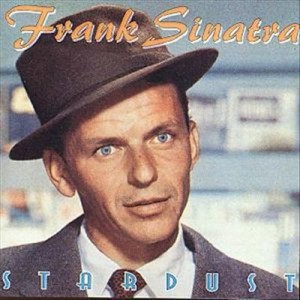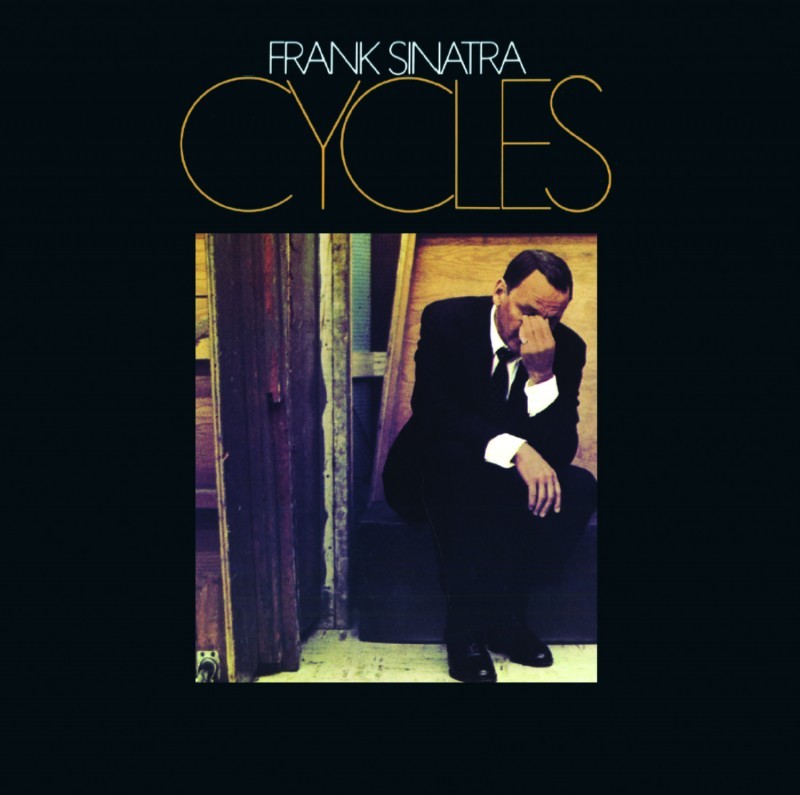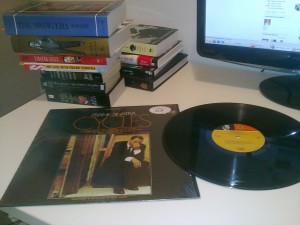New York New York – Frank Sinatra (Theme From New York New York)
New York New York, Theme from New York New York actually, was written by Fred Ebb and composed by John Kander for the Martin Scorsese film New York, New York in 1977. In 1979, Frank Sinatra recorded the song for his album Trilogy: Past Present Future. Frank Sinatra sang the song many times in his concerts, and also as a duet with Liza Minnelli in a concert, and with Tony Bennett in his Duets album.
In some of his concerts, Frank Sinatra adds the part of the song New York New York (from the film On The Town, 1944) to the beginning of this song.
New York, New York, a helluva town.
The Bronx is up, but the Battery’s down.
The people ride in a hole in the groun’.
New York, New York, it’s a helluva town!
Start spreading the news…
New York New York was a big success for Frank Sinatra. In all of his concerts, we can hear the audience literally going crazy when New York New York starts. It then replaced My Way, and became the new national anthem.
Frank first sang New York New York in public in October 1978, during a charity event at Waldorf-Astoria. The previous year, when it had been the theme song for the movie, it had not really taken off. Performed live by Frank, it became a show-stopper. It was in 1979 , in Los Angeles, that he made the recording that endures today. It came over as a new, defiant personal statement as much as a paean to a city.
In June 1980, in a fever of anticipation, New Yorkers thronged to hear Frank at Carnegie Hall. San Diego Union-Leader columnist Don Freeman recalled how on hearing the first tentative sounds of the song the audience “erupted into a thunderclap of loving recognition. Sinatra the wise showman allowed the applause and the cheers to reach a high decibel peak, and descend into a deliciously tense, expectant silence. Sinatra the artist would bring the audience along the heights again, but on his terms. He puffed on a cigarette, sipped from a glass of wine. And then he sang New York New York… Unforgettable”
The following part is from the book Sinatra! The Song Is You, Will Friedwald.
By far the most commercially successful number of The Present –on all of Trilogy, in fact- was not any kind of youth-directed pop-art at all but what amounts to a show tune from a flop film, “New York New York.” Frank Military, who had left Sinatra’s employ at the end of the Capitol era, rightfully busts his buttons with pride at having been the first to pull Sinatra’s coattails to this piece of material. “I sent him the song, and he said he would listen to it. I kept calling Dorothy
Written for Liza Minnelli (who had a minor hit with it) in Martin Scorsese’s unfortunate 1977 musical of the same name, “New York New York” marked the second show-type tune of that title to be associated with Sinatra (the first was from his 1949 film On The Town) and is more correctly titled “Theme from New York New York.” In some early concert performances, Sinatra opened with the Bernstein-Comden-Green song to lead into the soon-to-be familiar John Kander-Fred Ebb introductory vamp.
Sinatra began doing the new “New York New York” in concert in October 1978, around the time Falcone joined him, and initially used it as his opening number. “We were rehearsing up at NBC, and he brought the sheet music up to the piano and said, ‘Here, play this for me,’” the pianist recalled. Around that time, Sinatra commissioned Costa to assemble an instrumental “overture” medley of New York songs for the Radio City engagement, which would include “Autumn in New York” and “Sidewalks of New York” and conclude with the now internationally known vamp to “New York New York.” The Chairman would enter the boardroom on top of the riff, the audience would begin applauding, and Sinatra would, to coin a phrase, start spreading the news.
“After that engagement,” Falcone continued, “he said to me, ‘Man, this thing is getting big. We have to take it out of the overture.’ So I wrote a new ending for Don’s overture. And then he said, ‘We got to put this further down in the show.’ So it went down about halfway into the program because ‘My Way’ was still the close. But ‘New York’ just kept getting bigger. Of course, all during this period, all during that year, he started to grow with the song, and he started to put it into the shape that it eventually took. It didn’t start out to being as dramatic at the end as it is now, with a much, much slower tempo. That’s why he likes to do a song on stage for several months before he records it; he feels that he develops the song. And he doesn’t want to record it too early because then he figures he’ll change it.” Once the record is released, Sinatra usually becomes locket into the rough form of arrangement. (Of course he may decide a number of years later to start all over again with a completely new treatment.)
Sinatra had originally recorded “New York New York” in New York, appropriately, in August 1979, along with most of the rest of The Present. Between August and September of that year, however, he felt his take on the tune had so improved that he should remake the number, doing it on the same date that he was also tackling part of the Billy May portion of the package. Said Falcone, “The Old Man didn’t like the way it came off in New York. He wasn’t satisfied with the way he did it. He had kept growing with that song, and by the time we were recording in Hollywood, it had grown that much more. So he said, ‘The hell with it. I want to do it over again.’ So I introduced it and [veteran West Coast jazzman] Pete Jolly played the piano.”
By 1980, when Trilogy finally came out, “New York New York” was a bona fide hit- one that now concluded every Sinatra concert. Released as a single, “New York New York” together with Trilogy marked Sinatra’s biggest record triumphs in a decade, and a double whammy at that. He can be counted on to bring down the house with it at every show, particularly those in New York City area. As sung by Minnelli, it’s just your average da-da-da sow tune. In the hands –or tonsils, rather- of Sinatra, it exemplifies the anger and the optimism, the ambition and the excrement that is New York. And that is also Sinatra. By the time he reaches the outchorus, and the modulation that occurs with the second line he sings “those little town blues,” the excitement of the crows is impossible to contain. “New York,” as the Military suggests, has become more closely identified with Sinatra than any other song, even perhaps more than “My Way.” (As late as 1990, in the horror comedy Gremlins 2, when the army of furry little killer mesquites are about to invade Fun City en masse, their head honcho cheers them on by donning a trench coat and fedora and breaking into “Start spreading the news…”)
The following part is from the book Lady Blue Eyes, My Life with Frank, Barbara Sinatra.
Despite his great love of New Jersey and New York, Frank didn’t have a song that summered up his feelings about the place. I’d long thought that he should. When Martin Scorsese directed the 1977 musical New York New York, starring Liza Minnelli and Robert De Niro (who Frank always hoped might play him in a movie one day), I had an idea. The title song written by John Kander and Fred Ebb and belted out by Liza was such an incredibly powerful number that I suddenly realized it was perfect for Frank. It would be great for him because of his connection with New York, but I was convinced it would be a huge hit internationally too. When I first suggested that he record it, though, he dismissed my idea out of hand. “Naw, that’s Liza’s song,” he said. “She does it great. I’d never take that away from her.” Frank had been close to Liza’s mother, Judy Garland, since the 1940’s , and he treated Liza like a sassy daughter. His loyalty was touching.
“But, Frank,” I countered, “you wouldn’t be taking anything away from Liza- just doing it your way. ‘New York New York’ is much more of a man’s song. I mean, those lyrics- ‘king of the hill’? That’s the story of your life!”
He wouldn’t have it at first, but I’d keep trying to work my idea into the conversation whenever I could. I’d managed to influence his musical choices several times in the past simply by telling him, “Oh, I love that song, darling. It’s one of my favorites,” if I head him practicing a number I particularly liked. He’d sort his music into three piles- “yes,” “no,” and “maybe” – and one word from me was usually enough to get something added to the “yes” pile.
Getting him to sing “New York New York” was almost as tricky; I knew I was going to have to think of some other way to persuade him. Fortunately, I had several people on my side, including friends, fellow musicians, and executives at his record company, who were all of it. After a while, Liza’s show closed and her single dropped off the charts, so Frank wouldn’t be treading on her toes in any way. Then in 1978, when the New York governor Hugh Carey was running for reelection, I spotted my chance. I told Frank, “Okay, then, don’t record ‘New York New York,’ but at least work up an arrangement to sing at Carey’s inauguration gala. Try it out there and see what happens.” He finally agreed and asked Don Costa to arrange a brassy version for his voice accompanied by his usual big orchestra. He performed it at Radio City Musical Hall in October of that year. Brought to life with his unique phrasing and impeccable timing, the number he almost didn’t sing brought the house down.
A year later Frank relented and recorded what was to become a Sinatra anthem. He incorporated it into his Trilogy set of albums- Past, Present, and Future- his first new recordings in six years, chiefly because he’d been so busy touring. Those albums went straight to number one and garnered six Grammy nominations. Although he never admitted I was right to have suggested “New York New York” for him, I know he always felt a great personal connection to the song because he chose it thereafter as his closing number, replacing “My Way.” Not that he gave me any credit for that; he said only that it was too strong an opener and needed to be moved to the back. The irony was that the number’s biggest fan (yours truly) rarely got to hear it all the way through because, by the time he was on his finale, I’d be slipping out the side door in his cue of “These little town blues are melting away…” because Frank’s version of “New York New York” was adopted by the Yankees and played after every victory, a fact that made us both very proud.
The following part is from the book Sessions with Sinatra (Frank Sinatra and the Art of Recording, Charles L. Granata)
At some point, the number became the most requested song of Sinatra’s live concert performances, and it moved from the middle to the coveted “closing” spot. “Eventually the song got so powerful.” Says Falcone, that Frank said, “Let’s take My Way out of the show. I’m sick and tired of singing the song. I’ve been trying to find something to replace it for years, and we’ve finally gotten it. For several years during that period, we didn’t even do ‘My Way’ in the show; it was only performed when we went to Europe, or some other place abroad. New York New York became the closer, and nothing has ever come along, and nothing ever will, as I see it.
Frank Sinatra likes changing lyrics, as we know, and though not as much as he does for The Lady Is a Tramp for example, he does it for New York New York as well. He sometimes uses “Come on, come through” instead of “It’s up to you”, which I think reflects the songs in a better way.
Variations for “If I can make it there, You know, I’m gonna make it anywhere”
I know that I’m about to make it baby anywhere. (Live at Caesars Palace, 1982)
You know I’ll make it anywhere. ( Live At The Meadowlands)
You know I’m gonna make it anywhere. Come on, come through, New York New York, New York New York, New York New York, New York. (21 November 1993, Foxwoods Casino)
I’ll make it, I’ll make it anywhere. (1980-09-13, Royal Festival Hall, London, England)
I’m gonna make it ehmm anywhere. (1979-11-22 Resorts International, Atlantic City)
I know I’ll make it anywhere. (1982-01-24 Radio City)
You know, I’m gonna make it just about anywhere. (1987-10-17 Worchester)
You know I’m gonna make it any goddamn where. (1981-03-28 Caesars Palace)
You know I’m gonna do it any goddamn where, come on come through New York New York, New York. (1987-12-09 Carnegie Hall)
If I can, If I can make it there, you dirty rat, I’m gonna make it anywhere. (1988-04-30 Bally’s Grand)
What Did Frank Sinatra Say About New York New York?
Frank Sinatra: We’re gonna take the plane and we’re gonna fly everbody up east Miami, north of here, about a hundred miles away. The greatest city in the whole world.
Frank Sinatra: Vincent Falcone takes the time now to conduct one of the most exciting pieces of music of all of my years.
Frank Sinatra: This is a new song, we’re going to play for you for the first time. (1991-09-21 Milano, Italy)
Frank Sinatra: This is a wonderful song about one of the beautiful cities in our world, this is a very famous song all over the world.
Frank Sinatra: This song was introduced to me by great Liza Minnelli, it was written by Fred Ebb and John Kander, orchestrated by the late Don Costa. (Live At Meadowlands)
Frank Sinatra: Now, we come back over the ocean to our country again, to the greatest city the men ever built. (1979-11-22 Atlantic City)
Frank Sinatra: Oh this song we’re gonna introduce you to now will be number 1 so quick it’s gonna scare you when it happens. ( 1986-07-04 Golden Nugget)
Frank Sinatra: A ballad, beautiful ballad, written by Fred Ebb and John Kander(1991 October 5, Frankfurt)
Frank Sinatra: The national anthem! This song was written by Fred Ebb and John Kander, orchestrated by Don Costa, introduced by Liza Minnelli and stolen by me. (1987-10-17 Worchester)
Frank Sinatra: Ladies and gentleman, the national anthem. This song was written by Fred Ebb and John Kander, orchestrated by Don Costa, introduced by Liza Minnelli and stolen by me. (1987-12-09 Carnegie Hall)
Frank Sinatra: The name of this song is Chicago. (1987-06-17 Italy)
Frank Sinatra: Now of course we come to the national anthem of this great city. (1984-12-06 Carnegie Hall)
Frank Sinatra: This next song was written by Fred Ebb and John Kander, orchestrated by Don Costa, introduced by Liza Minnelli and stolen by me. (1986-12-31 Golden Nugget)
Frank Sinatra: New York, New York! From the film of the same name, made famous by Liza Minnelli! With a “Z”! (27 September 1979, The Pyramids, Egypt)*
Frank Sinatra: A wonderful song by Fred Ebb and John Kander, and Don Costa’s orchestration. And you know it well. It’s about a small town in America. (9 October 1991, The Point)*
Frank Sinatra: A couple guys named Fred Web and John Kander wrote this and the late Don Costa’s tremendous orchestration. (27 April 1991, Circle Star Theatre)*
Frank Sinatra: We’re gonna take a stroll. Just you and me for a lil bit. (25 June 1980, Carnegie Hall)*
Frank Sinatra: This next song is the orchestration by Don Costa. And I don’t think you’ve ever heard this song before. Shoot. (27 September 1986, Palatrussardi)*
Frank Sinatra: Uh, this is a song written by Fred Ebb and John Kander. I never met these guys. They’re very talented people by the way. Don Costa did the orchestration. You know this song very well. 21 October 1994, St. Louis Kiel Center)*
Frank Sinatra: That’s from the film, “New York, New York” that starred Liza Minnelli, and I thank you. (15 June 1979, 40th Anniversary Concert)*
Frank Sinatra: Fred Ebb and John Kander, Don Costa’s orchestration on “New York, New York”. (16 October 1978, Radio City Music Hall)*
Frank Sinatra: You don’t know the song, right? This is a song written by Fred Ebb and John Kander, orchestrated by Don Costa, introduced by Liza Minnelli and stolen by me. Good song. (9 January 1988, Sanctuary Cove)*
*Special thanks to Michael Wind for his contributions to What Did Sinatra Say About New York New York part.






